Brown jasmine rice is a nutritious whole grain known for its nutty flavor and chewy texture, offering more fiber, vitamins, and minerals compared to white rice․ Perfect for health-conscious meals, it pairs well with both traditional and modern dishes, making it a versatile choice for home cooking․
What is Brown Jasmine Rice?
Brown jasmine rice is a type of whole-grain rice with a distinctive nutty flavor and aromatic scent․ Unlike white rice, it retains its bran and germ, offering higher nutritional value․ Its chewy texture and robust flavor make it a popular choice for health-conscious individuals․ Native to Thailand, it’s often used in Southeast Asian cuisine, providing a hearty base for meals․ The combination of its unique taste and nutritional benefits makes it a versatile option for various cooking methods and dishes․
Benefits of Cooking Brown Jasmine Rice
Cooking brown jasmine rice offers numerous health benefits due to its high nutritional value․ It provides more fiber, vitamins, and minerals compared to white rice․ The bran and germ in brown jasmine rice make it a richer source of antioxidants and essential nutrients․ Its chewy texture and nutty flavor enhance meal quality, making it a great option for health-conscious diets․ Additionally, it supports digestive health and provides sustained energy, making it a versatile and nutritious choice for various recipes․
Choosing the Right Brown Jasmine Rice
Selecting high-quality brown jasmine rice ensures authentic flavor and texture․ Opt for fresh, aromatic grains from trusted sources to enhance your cooking experience with this nutritious whole grain․
How to Select High-Quality Brown Jasmine Rice
When selecting brown jasmine rice, look for fresh, aromatic grains with a light tan color․ Avoid dusty or discolored rice, as this indicates age or poor storage․ Opt for rice with minimal broken grains to ensure better texture․ Check packaging for moisture-free content and a recent production date․ Trusted brands or sources, especially from regions like Thailand, often guarantee authenticity and superior quality․ Freshness and proper storage are key to preserving its nutty aroma and chewy texture․
Where to Buy Brown Jasmine Rice
Brown jasmine rice is widely available in most health food stores, specialty grocery stores, and well-stocked supermarkets․ Asian grocery stores often carry authentic Thai varieties, ensuring superior quality․ Online retailers like Amazon, Whole Foods, and Trader Joe’s also offer convenient options․ Look for it in the international or organic sections․ When purchasing, check for freshness by ensuring the packaging is sealed and free from moisture․ Buying from trusted sources guarantees better flavor and texture, making your cooking experience more enjoyable․
Understanding the Difference Between Jasmine and Regular Brown Rice
Jasmine rice, including its brown variant, is known for its distinctive aroma and soft, clingy texture․ Unlike regular brown rice, which is typically drier and chewier, brown jasmine rice retains a unique buttery fragrance and a slightly sticky texture when cooked․ While regular brown rice is often longer in grain length, jasmine rice grains are shorter and plumper, absorbing water differently․ These characteristics make brown jasmine rice a popular choice for both authentic Thai dishes and everyday meals, offering a unique flavor profile and texture․
Essential Tools for Cooking Brown Jasmine Rice
A rice cooker, sturdy pot, measuring cups, and spoons are must-haves․ Optional tools include a Dutch oven or oven-safe dish for even heating and a fork for fluffing․
The Best Pots for Cooking Brown Jasmine Rice
A heavy-bottomed pot with a tight-fitting lid is ideal for cooking brown jasmine rice․ Stainless steel or non-stick materials are recommended for even heat distribution and easy cleanup․ Ensure the pot is large enough to accommodate the rice as it cooks and expands․ A clear glass lid allows monitoring without releasing steam, helping achieve the perfect texture․ Avoid small or thin pots, as they can lead to uneven cooking or scorching․
Why a Rice Cooker is a Great Investment
A rice cooker is a fantastic investment for perfect brown jasmine rice every time․ It ensures even heat distribution, prevents overcooking, and requires minimal monitoring․ Many models have specific settings for brown rice, optimizing cooking time and texture․ Plus, it keeps rice warm for hours, making meal planning easier․ The convenience and consistency it offers make it a worthwhile addition to any kitchen, especially for frequent rice cooks․
Measuring Cups and Spoons for Precise Water Ratios
Accurate water ratios are crucial for perfectly cooked brown jasmine rice․ Using measuring cups and spoons ensures the right balance, preventing undercooked or mushy results․ For brown jasmine rice, a common ratio is 2 cups of water for every 1 cup of rice․ Precision helps maintain the grain’s texture and flavor, making measuring tools essential for consistent outcomes․ This simple step elevates the cooking process, guaranteeing delicious and fluffy results every time․
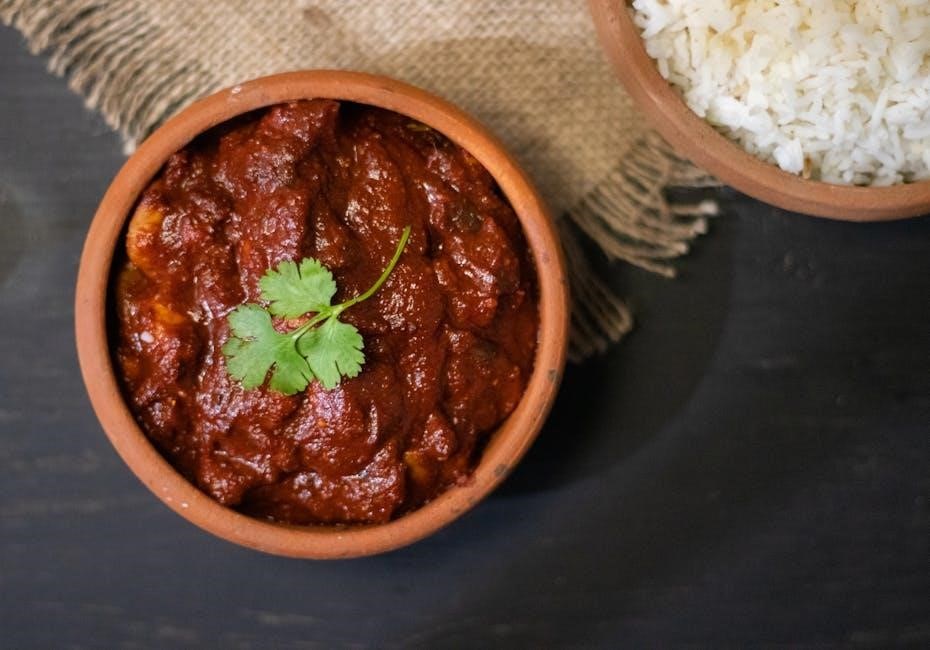
Preparing Brown Jasmine Rice
Preparing brown jasmine rice involves rinsing to remove impurities and soaking to reduce cooking time․ These steps enhance texture and ensure even cooking for perfect results․
Rinsing Brown Jasmine Rice Before Cooking
Rinsing brown jasmine rice removes excess starch and impurities, ensuring better texture and flavor․ Using a fine mesh strainer, rinse under cold water for about 30 seconds until the water runs clear․ This step prevents stickiness and promotes even cooking․ It’s a simple yet crucial preparation that enhances the overall quality of the cooked rice, making it fluffier and more aromatic․
The Importance of Soaking Brown Jasmine Rice
Soaking brown jasmine rice can significantly reduce cooking time and improve texture․ By softening the outer layer, soaking helps the rice cook more evenly․ It also breaks down some of the phytic acid, making nutrients more accessible․ Typically, soaking for 30 minutes to an hour is recommended, though some prefer longer times for even faster cooking․ This step is especially beneficial for those who find brown rice too chewy, making it a versatile option for various recipes and dietary needs․
Cooking Methods for Brown Jasmine Rice
Brown jasmine rice offers versatile cooking options, including stovetop, rice cooker, and oven methods․ Adjustments in water ratio and cooking time ensure perfect texture for all preferences․
Stovetop Cooking: A Step-by-Step Guide
For stovetop cooking, rinse 1 cup of brown jasmine rice thoroughly․ Heat 2 tablespoons of oil in a medium pot over medium heat․ Add the rice and stir for 1-2 minutes․ Pour in 2 cups of water, bring to a boil, then reduce the heat to low, cover, and simmer for 40-45 minutes․ Let it rest, covered, for 5 minutes before fluffing with a fork․ This method ensures tender, perfectly cooked grains every time, with minimal effort required․
Using a Rice Cooker for Perfect Results
Using a rice cooker ensures consistent, perfectly cooked brown jasmine rice․ Rinse 1 cup of rice, add 2 cups of water, and place in the cooker․ If available, use the brown rice setting; otherwise, the standard rice setting works․ Cook for 40-45 minutes․ Let it rest for 5 minutes after cooking to allow steam to distribute evenly․ Fluff gently with a fork for separated grains․ This method offers hands-off convenience and reliable results, making it ideal for achieving fluffy, aromatic brown jasmine rice every time․
Oven Baking for Even Heat Distribution
Oven baking is an excellent method for cooking brown jasmine rice, ensuring even heat distribution․ Preheat the oven to 375°F (190°C)․ In a baking dish, combine 1 cup of rinsed brown jasmine rice with 2 cups of water․ Cover tightly with foil and bake for 45-50 minutes․ Remove, let rest for 5 minutes, then fluff with a fork․ This method prevents overcooking and retains steam, resulting in perfectly cooked, aromatic rice with a chewy texture and nutty flavor, ideal for accompanying various dishes․
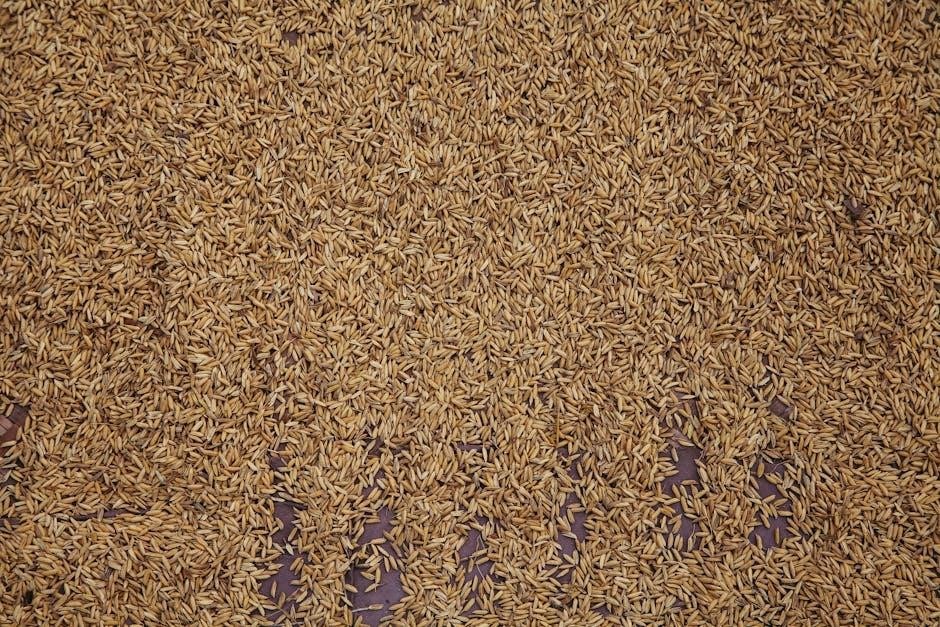
Post-Cooking Tips
After cooking, let the rice rest for 5 minutes to steam evenly․ Fluff gently with a fork to separate grains and enhance texture․ Season lightly to boost flavor and aroma without overpowering its natural nutty taste․
How to Fluff Cooked Brown Jasmine Rice
To fluff cooked brown jasmine rice, let it rest for 5 minutes․ Use a fork to gently break up clumps, ensuring grains separate evenly․ This step enhances texture and prevents clumping․ Lightly tossing with a fork or paddle helps maintain the rice’s natural aroma and flavor․ Proper fluffing ensures each grain is distinct and not sticky, achieving the perfect consistency for serving alongside any dish․ Fluffing is essential for optimal texture and presentation․
Seasoning Options for Enhanced Flavor
Add herbs like parsley or cilantro for freshness, or spices like turmeric or paprika for color and depth․ A drizzle of soy sauce or a squeeze of lime juice can enhance umami and brightness․ Mix in roasted garlic or ginger for aromatic richness․ For a Mediterranean twist, incorporate olive oil and oregano․ Lightly toasting spices before adding them intensifies their flavor․ Experiment with combinations to create unique profiles, ensuring the rice complements your dish while retaining its distinctive nutty charm․
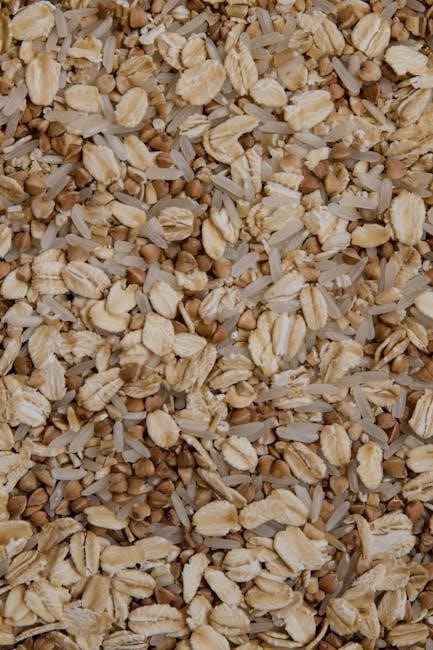
Common Mistakes to Avoid
Common mistakes include not rinsing the rice, leading to sticky grains, and using an incorrect pot size, which affects even cooking and texture․ Avoid these for better results․
Overcooking and Undercooking: Finding the Balance
Overcooking brown jasmine rice results in a mushy texture, while undercooking leaves it too firm․ Achieving the perfect balance is key․ Cook until the rice is tender but still retains some chewiness․ Using the right water ratio and monitoring the cooking time ensures optimal results․ Properly cooked grains should be soft yet slightly firm in the center․ Adjustments may be needed based on personal preference or specific recipes․ Fluffing the rice after cooking helps separate the grains for a better texture․ Patience and attention during the cooking process are essential to avoid these common mistakes․ This ensures a delicious and satisfying meal every time, making it worth the extra care and effort; Properly cooked brown jasmine rice enhances any dish, providing both flavor and nutrition․
The Dangers of Using Too Much Water
Using too much water when cooking brown jasmine rice can lead to a mushy, unappealing texture․ Excess water disrupts the grain’s natural structure, resulting in a lack of fluffiness and separation․ Additionally, it can cause the rice to become sticky and clumpy, making it less enjoyable to eat․ The ideal water ratio is crucial to maintaining the rice’s integrity and flavor․ Overhydration also dilutes the nutty aroma and natural taste of the rice, turning a potentially delicious dish into an unsatisfactory one․ Always measure water accurately to avoid this common mistake and ensure perfectly cooked grains every time․
Why You Shouldn’t Skip the Resting Period
Skipping the resting period after cooking brown jasmine rice can lead to uneven cooking and a less desirable texture․ During this time, steam redistributes evenly, ensuring grains are tender and fluffy․ Rushing the process can result in rice that’s either undercooked or mushy․ Allowing the rice to rest seals the flavors and prevents it from becoming sticky or clumpy․ This step is essential for achieving perfectly cooked, aromatic brown jasmine rice that retains its natural texture and taste․
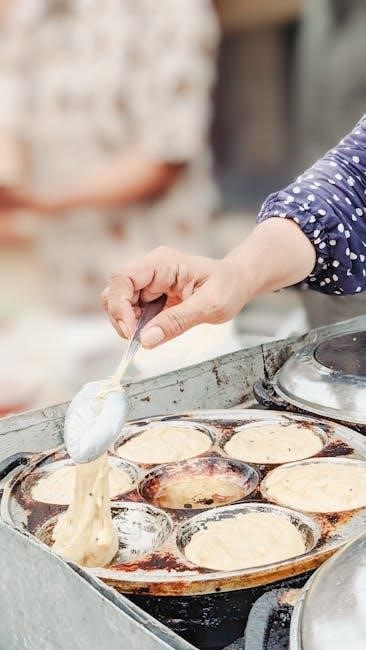
Health Benefits of Brown Jasmine Rice
Brown jasmine rice is a whole grain rich in fiber, vitamins, and minerals, promoting better digestion, blood sugar stability, and heart health compared to white rice․
Nutritional Value of Brown Jasmine Rice
Brown jasmine rice is rich in fiber, vitamins, and minerals, making it a healthier choice than white rice․ It contains manganese, selenium, and B vitamins, which support energy production and antioxidant functions․ The whole grain retains its bran and germ, providing more nutrients and a lower glycemic index, which helps regulate blood sugar levels․ Its high fiber content aids digestion and promotes a feeling of fullness, making it ideal for those seeking a nutritious, balanced diet․
Why Brown Rice is Better Than White Rice
Brown rice surpasses white rice in nutritional value due to its whole grain composition․ It retains the bran and germ, providing more fiber, vitamins, and minerals․ This makes it richer in antioxidants and has a lower glycemic index, which helps maintain steady blood sugar levels․ Brown rice supports better digestion and offers a fuller, more satisfying meal compared to white rice, which is stripped of these nutrients during processing․ Choosing brown rice is a healthier and more wholesome option for overall well-being․
Cooking brown jasmine rice is a simple yet rewarding process that enhances meals with its nutty flavor and nutritional benefits․ With proper techniques, it becomes a delightful addition to any dish, promoting health and satisfaction in every bite․
Final Thoughts on Cooking Brown Jasmine Rice
Cooking brown jasmine rice is a simple yet rewarding process that offers both nutrition and flavor․ By following proper techniques, such as using the right water ratio, allowing it to rest, and fluffing it gently, you can achieve perfectly cooked grains every time․ Experiment with seasonings and pairing options to enhance its natural nutty flavor․ With its versatility and health benefits, brown jasmine rice is a great addition to a balanced diet, ensuring satisfying and nutritious meals;
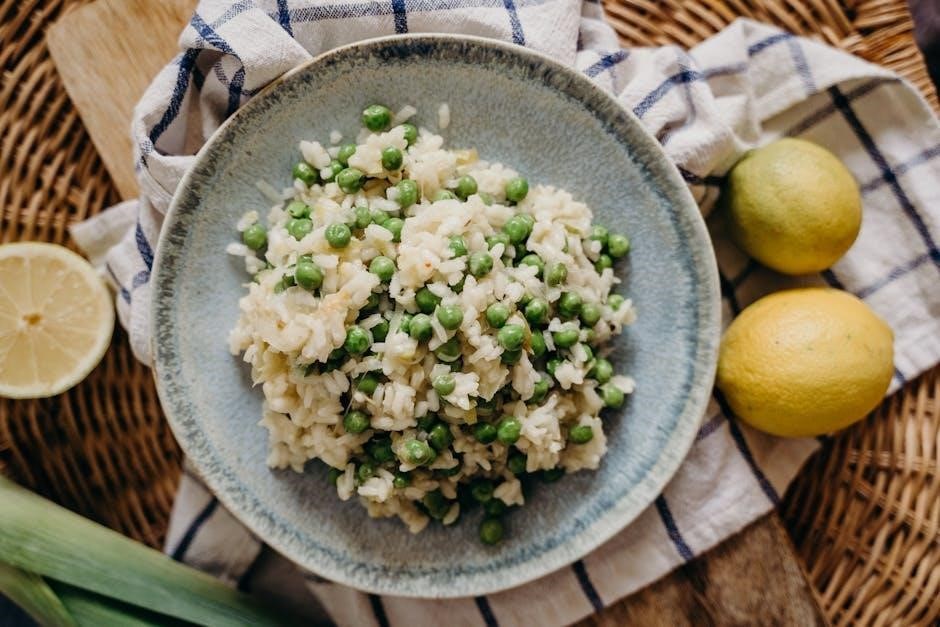
Leave a Reply